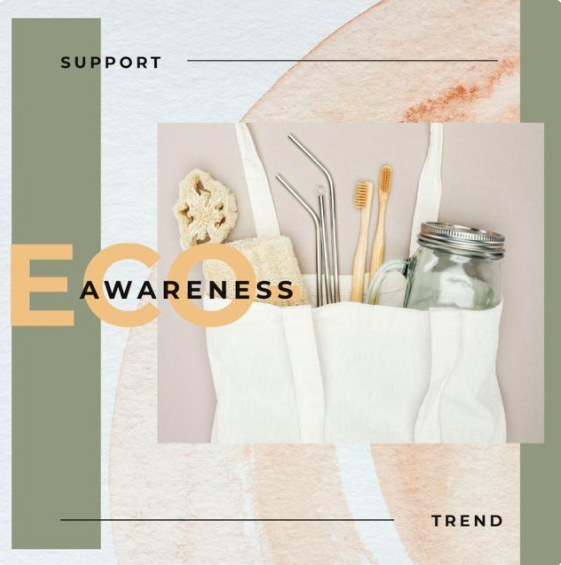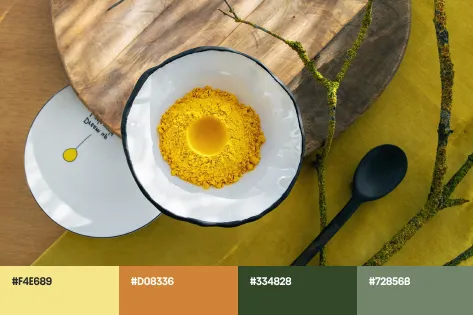Green Marketing Tips for Brands Going Eco-Friendly in 2021
Almost everybody secretly hopes that their lives will change for the better next year. Therefore, we often make promises to ourselves to exercise or start eating healthy food from January 1st. Perhaps your company has also committed to becoming slightly better in 2021 and added some environmentally friendly principles to the corporate policy.
We’re proud of your green marketing initiative and you should also know that 2021 is a great year for such a change. In our first article of the year, we want to give you some valuable tips on how to explain the increased value of your products to your target audience.
Is your business environmentally friendly? Check right now!
Green marketing (environmental marketing or ecological marketing) is popular among commercial companies that decided to minimize their harmful impact on nature or make commitments to restore natural resources.
You may think that eco-friendly production entails additional costs, so products with eco-certification cost more than their non-eco alternatives. However, this is not always true.
Some approaches to making your company ‘greener’ and more sustainable mean lower production costs over the years. What’s more, for 81% of millennials and 90% of Gen Z’s an ‘eco-friendly’ seller’s status is an important factor when making a purchasing decision. However, if you do not speak up about your ‘green’ status, no one will know about it, and you will lose an important competitive advantage.
And here is a list of things that make your brand slightly more sustainable and environmentally friendly. Check it out for yourself! Perhaps you have long been an eco-friendly organization.
Eco-friendly companies…
- Reduce energy consumption and opt for renewable energy sources.
- Use reusable office supplies.
- Cooperate with suppliers that create reusable, recyclable, or recycled material products and apply for ethical sourcing.
- Choose green web hosting (which servers consume less or use green energy).
- Produce goods from renewable raw materials.
- Apply for eco-friendly cleaning.
- Run recycling programs.
- Choose ‘Locals for locals’ distribution to cut down CO2 emissions.
- Invite others to join eco-initiatives and promote eco-friendly principles.
Each of these positive features is already worthy of reflection in your website design, advertising, and tone of voice you use to communicate with customers on social media. And what’s more, such features boost your reputation among potential employees and partners.
Eco-friendly companies in 2021 that can inspire you with their eco-centered communication: Patagonia, Seventh Generation, A Good Company, Pela, Preserve, West Paw, Beyond Meat, Green Toys, Wipro EcoEnergy, Thinx, Native Shoes, and others.
2021 is the year for green marketing messages. Why?
Have you already seen the 2021 Visual Trends Report by Depositphotos? If not, here’s a little spoiler: three out of ten trends are somehow related to nature and ecology.
For example, nature and eco-friendly products appear to be powerful symbols of optimism (trend #1). Creative agencies also agree that people will be actively looking for Solace in Nature throughout 2021 (trend #2). This means that with your ‘green’ corporate politics updates, you will be right on trend with the hype topics of this year.
And what do you think of Pantone Color(s) of the Year 2021? Sunny Illuminating Yellow and soil-inspired Ultimate Gray is yet more proof that nature deserves special attention today. Grounded colors (see the Brave Ground collection inspired by the Dulux Color of the Year) borrowed from nature, are also likely to dominate graphic design these days, hinting at the warm feelings modern society has for nature.
At the same time, it is much easier to explain why your company goes sustainable today than it was several years ago. After the events that took place in 2020 (like COVID-19 and some disasters), your target audience is likely starting to take green ideas more seriously.
6 ideas on eco transformations and your PR efforts
Some companies are taking a green approach because they feel they are responsible for what’s going on with our environment. Other companies are turning to the green side, as eco-friendly products give them a powerful competitive advantage. In both cases, your eco-transformations must be public. Thus, you will not only achieve an influx of new customers but also draw attention to an environmental issue that is important to you.
Below you will find some ideas on how to communicate your company’s green values, as well as a description of our favorite marketing practices in this area of environmental marketing.
#1 Tailored initiatives to build a community
Let’s imagine that you decide to switch to compostable raw materials for your products. You can simply dedicate a YouTube video and a few banners to these changes. But you can also go further and make your customers part of an eco-friendly community.
Your brand’s participatory marketing practices may include composting days where you and your customers meet to properly compost used products. You can also start a compost blog and tell people every day how to reduce the amount of non-biodegradable materials in their lives.
Example: The Home That Runs on Dunkin by Dunkin’ Donuts, an initiative that promotes sustainable living
#2 Nature-inspired designs
The right product packaging and overall design or your marketing materials is the best way to educate users about your new green roadmap. Natural patterns, botanical illustrations, and grounded color pallets will help you explain without words that your team takes care of nature and looks for inspiration there.
First and foremost, we advise you to ditch acid colors and geometric shapes in your marketing designs as they have strong technogenic associations. However, you can also dive deeper and completely rethink your packaging concept, ditching plastic for raw paper and metal and scotch tape for craft rope. Your apps, websites, and social media designs can also contain soothing natural elements.
Example: eco-friendly yet bright packaging of Lush products
#3 Certification
In 2021, you can’t just tell your audience that you have switched to recyclable materials or that your products are no longer harmful to nature. You need to be eco-certified. There are many certification services with certificates that are well respected in the world.
Depending on the specifics of your business, you can get the status of a company that uses wood from well-managed forests or organic cotton only. You can also donate to a well-known environmental organization and get the opportunity to place their logo on your products. If your green business transformations are not in an area that can be certified, enlist the support of experts from a relevant eco organization and get their official recommendation letter.
Once approved by a reputable fund or organization, share the news on your social media pages and add a certification label to your product packaging.
Certificates that environmental-friendly businesses can get: Carbon Trust Standard, EMAS, FSC, Blue Planet Friendly, MCERTS
#4 Providing evidence
You can share info about the eco-commitments you’ve made in 2021, or you can speak up about the positive results they have. Translate your green transformations into the talk about the positive environmental impact they have and use visuals to reinforce your positive image every day.
For example, if your company offers a city delivery service and decides to switch to electric cars this year to lower your carbon footprint, you can report on how much CO2 emissions you have cut out. And to motivate even more people to use your services, you can talk about how each order helps to reduce the world’s CO2 emissions.
Use illustrations and videos to make your statements clearer and more memorable.
Example: a trash-removing robot by Urban Rivers (see Kickstarter video)
See Nature & Wildlife template category
#5 Keep speaking up about your eco-friendly values
Environmental protection is a worthy topic to talk about often. Communication of some brands (and Patagonia is perhaps the most prominent of them) is entirely built on the promotion of green values. And these companies reap only benefits because of this!
Use storytelling to share new principles of your company with your audience and generate sympathy around your brand and products. You can tell the story of how you came up with the idea of reformatting your business, show the behind the scenes of these transformations, or show some of your most loyal customers commenting on the changes in your company.
Make sure the content you plan to post this year reflects your new eco-friendly positioning. It should contain detailed information on your green activities and ideas behind them.
Example: Patagonia is ‘in business to save our home planet’. See Public Trust Feature Film: The Fight for America’s Public Lands which is a feature-length documentary about America’s system of public lands and the fight to protect them.
#6 Targeted marketing campaigns with thoughtful taglines and special products
If for some reason you do not want to constantly focus on your new eco-standards of production or service, dedicate one (but loud!) creative marketing campaign to them. For example, launch an environmental campaign or launch a collectible themed product. In other words, make the news that are going eco potentially viral.
Let’s imagine that your Internet resource makes money from selling e-books and in 2021 you switched to servers powered by green energy. Let your customers know with banners and emails, and send them a free environmental e-book. You can also invite users to invite friends and receive a reward for it.
Example: the Save Our Species collection by Lacoste. As a part of its partnership with the IUCN, Lacoste removed its crocodile from its iconic polo. The number of polos made of each species corresponds to the actual number remaining in the wild.
Wrapping up
Green marketing seems to be similar to traditional marketing and PR communication, but it also has some subtle distinctive features. For example, you can’t claim to have started selling eco-friendly products unless you have proof.
You also need to be careful with the tools you use to spread the news that your company becomes environmentally friendly as your ‘green’ approach should be holistic and extend to all aspects of your business, including promotion. For example, there is barely room for non-recyclable plastic gift cards in a store that has ditched plastic production.
Nevertheless, even small eco-innovations are already an important contribution to environmental protection. Thank you for going eco and we hope you’ll inspire both customers and other businesses to follow your footsteps.














